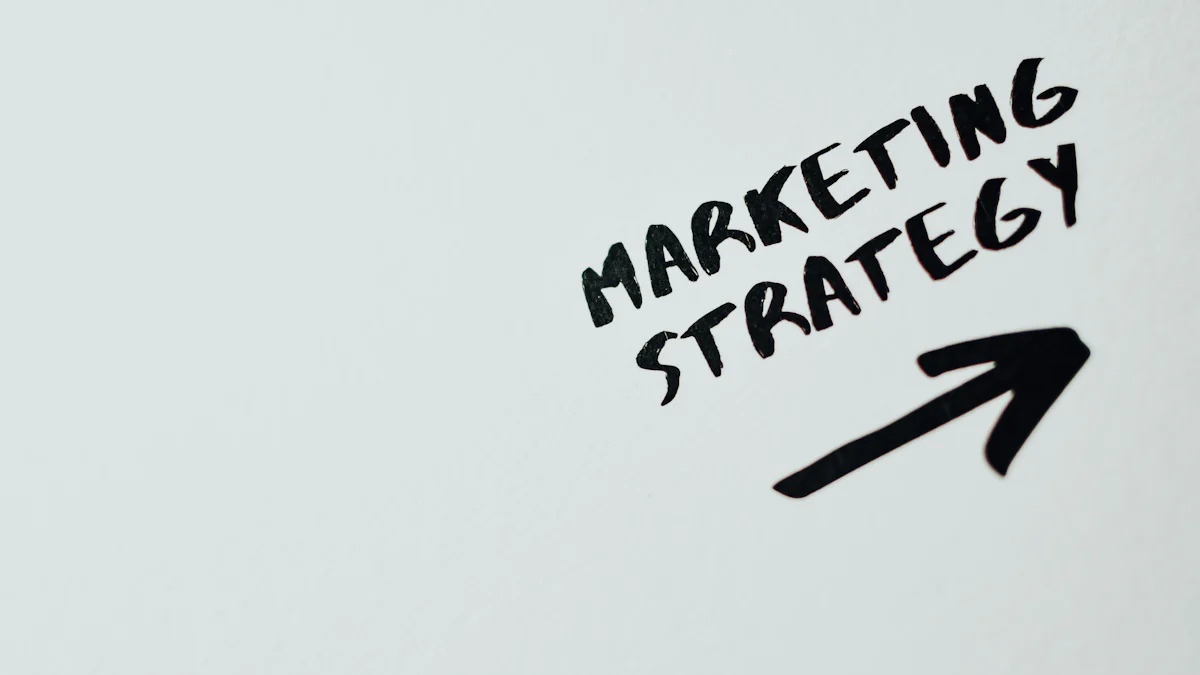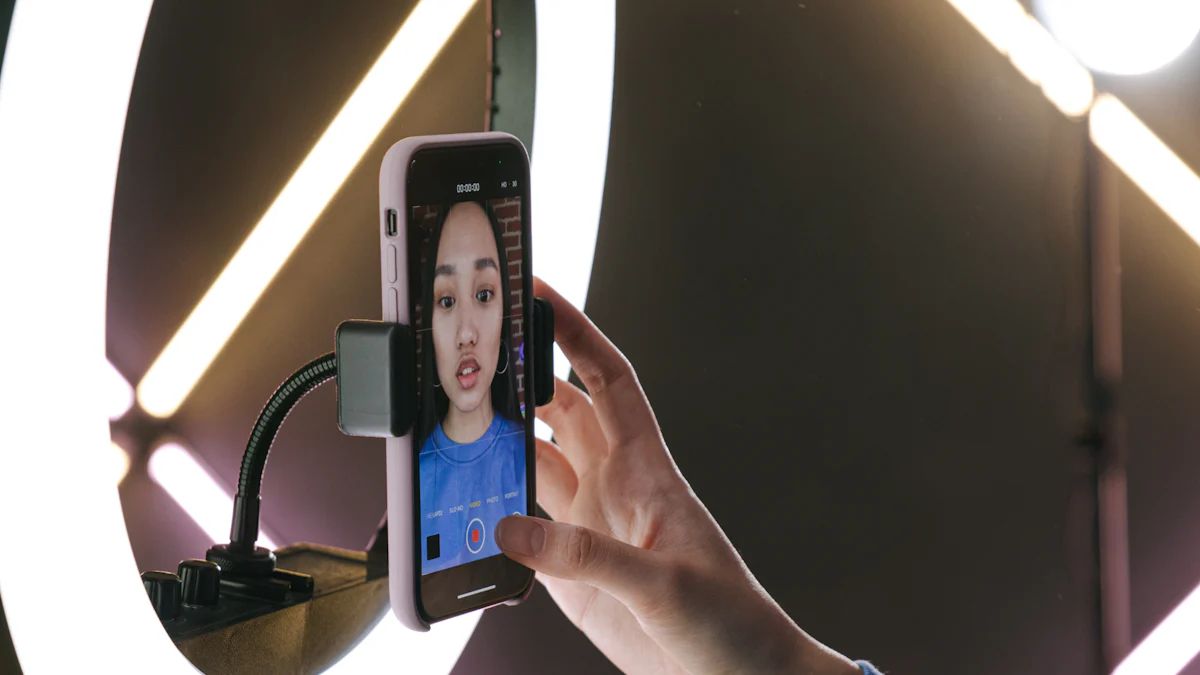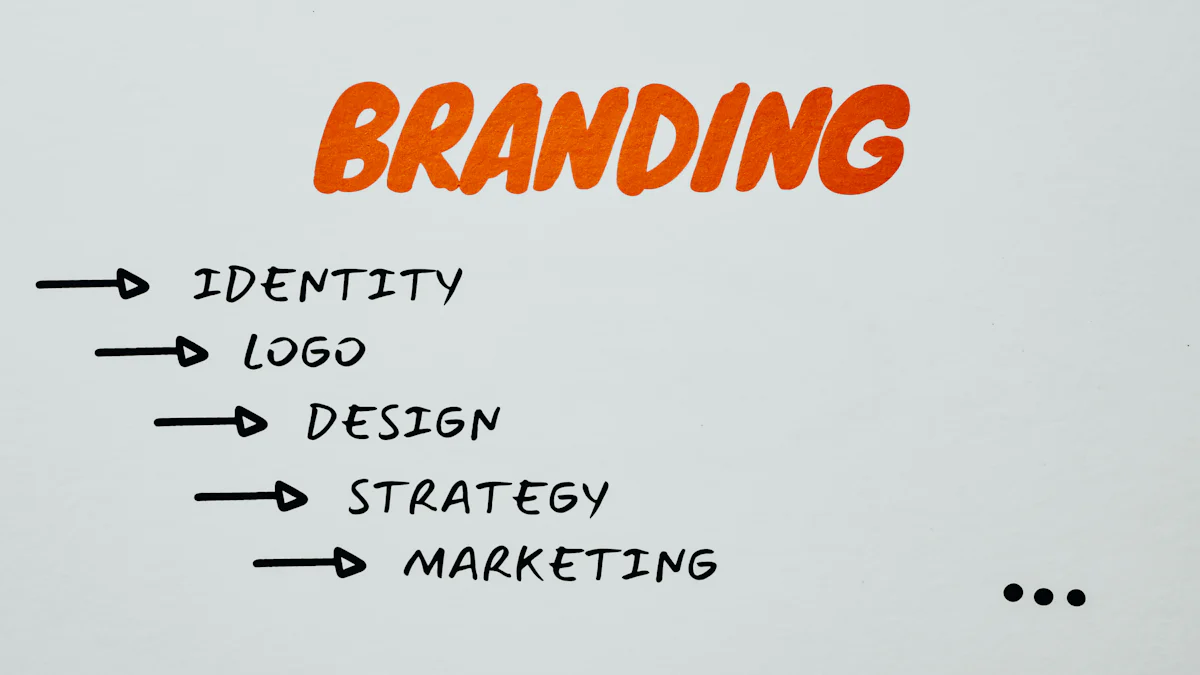Emerging Trends Shaping Influencer Marketing Agencies in 2025

The influencer marketing industry has grown exponentially, reaching $21.1 billion in 2023, and is projected to hit $24 billion by 2025. This rapid expansion reflects how brands are prioritizing influencer partnerships to connect with consumers. You can see this shift in strategies like co-creating campaigns with influencers and focusing on authenticity over polished production. Consumer trends also show a preference for relatable influencer content, which builds credibility and trust. As global influencer marketing evolves, understanding how to start an influencer marketing agency or adapt to new predictions will be crucial for staying competitive.
The Rise of Nano and Micro-Influencers

Why Nano and Micro-Influencers Are Gaining Prominence
Nano and micro-influencers are becoming essential players in influencer campaigns. These smaller-scale influencers, often with follower counts ranging from a few thousand to tens of thousands, bring unique advantages to brands. Their personal and authentic content resonates deeply with their audiences, leading to higher conversion rates. Unlike larger influencers, their relatability makes their recommendations feel genuine and trustworthy. This trust translates into measurable results, such as increased click-through rates and conversions.
Micro-influencers also excel in engagement. Studies show they can engage up to 60% more than larger influencers. This higher engagement often leads to better cost efficiency, with micro-influencers being 6.7 times more effective in terms of cost per engagement. By partnering with these influencers, you can access untapped audiences and reach new demographics. This approach aligns with the latest influencer marketing trends, where authenticity and meaningful connections take center stage.
Building Trust Through Niche and Engaged Audiences
Nano and micro-influencers thrive in niche communities. Their followers often share specific interests, creating a highly targeted audience for your campaigns. This focus allows you to deliver messages that resonate deeply, increasing the likelihood of success. For example, a fitness brand collaborating with a micro-influencer in the wellness space can connect directly with health-conscious consumers.
These influencers build intimate relationships with their followers, fostering trust and credibility. Their recommendations feel like advice from a friend rather than a sales pitch. This authenticity enhances the impact of influencer campaigns, making them more effective in driving purchasing decisions. By leveraging these influencers, you can create campaigns that feel personal and relatable, which is crucial for success in 2025.
Greater Emphasis on Authenticity and Transparency
The Role of Genuine Storytelling in Influencer Marketing
Genuine storytelling has become a cornerstone of influencer marketing. You can see its power in campaigns that focus on real people and their experiences. When influencers share honest testimonials, they create relatable and authentic stories that resonate with their audience. For example, showcasing a customer’s journey with a product can make the story engaging and memorable. Adding visuals to these stories enhances their impact, making them more vivid and easier to recall.
Emotion plays a key role in storytelling. Influencers who share heartfelt experiences connect with their followers on a deeper level. This connection builds trust and encourages engagement with the brand. Unlike traditional advertisements, authentic influencer campaigns feel personal and genuine. They foster a sense of connection that drives results, making storytelling an essential strategy for 2025.
Ethical Practices and Transparent Partnerships
Transparency is no longer optional in influencer marketing. Influencers who disclose partnerships openly build trust with their audience. When an influencer shares their love for a brand before a partnership begins, it enhances their credibility. Transparency about personal values also aligns with brand promotion, creating a stronger bond with followers.
Brands like Fenty Beauty have demonstrated the power of ethical practices. By sending PR packages to diverse influencers and encouraging honest reviews, they highlighted inclusivity and authenticity. This approach not only drove sales but also showcased the effectiveness of transparent marketing. You can follow similar strategies to create campaigns that feel honest and trustworthy.
Ethical practices go beyond disclosure. They involve aligning with influencers who share your brand’s values. When you prioritize transparency and authenticity, you create campaigns that stand out in a crowded market. These practices will remain vital as influencer marketing trends evolve in 2025.
AI and Technology Integration in Influencer Marketing
AI Tools for Influencer Discovery and Campaign Optimization
The rising use of artificial intelligence is revolutionizing how you approach influencer marketing. AI tools simplify influencer discovery by analyzing vast amounts of data to identify influencers who align with your target audience. These tools evaluate engagement patterns, audience demographics, and even influencer behaviors. This ensures you collaborate with individuals who have genuine, engaged followers rather than relying solely on follower counts. By using AI, you can make smarter recommendations and form partnerships that drive better results.
AI also enhances campaign optimization. Predictive analytics allow you to forecast campaign performance based on historical data. For example, AI can analyze social media interactions and suggest adjustments to improve engagement. Fraud detection is another critical feature. AI identifies fake followers, ensuring your campaigns remain authentic and effective. Performance tracking tools provide actionable insights, helping you measure success and refine strategies. These advancements make AI indispensable for influencer marketing trends in 2025.
Automation and Personalization for Enhanced Engagement
Automation is transforming how you manage influencer campaigns. It streamlines repetitive tasks like identifying influencers or sending follow-up communications. This efficiency allows you to focus on building meaningful relationships and crafting personalized recommendations. For instance, automation tools can match influencers with campaigns tailored to their audience preferences. This creates authentic collaborations that resonate with followers.
Personalization is key to boosting engagement. AI-driven insights help you understand what your audience values. By tailoring content to these preferences, you can deliver messages that feel relevant and genuine. The growing popularity of short videos, for example, highlights the need for dynamic and engaging formats. Automation ensures these short-form video campaigns are executed seamlessly, maximizing their impact. As short-form video continues to dominate, combining automation with personalization will help you stay ahead of the curve.
The rising use of artificial intelligence and automation is reshaping influencer marketing. These tools not only save time but also enhance the quality of your campaigns. By leveraging them effectively, you can create impactful strategies that align with the latest trends and drive meaningful engagement.
Social Commerce and Live Shopping Trends

Shoppable Content and E-Commerce Integration
Social commerce has transformed how you shop online by integrating shopping features directly into social media platforms. This trend makes it easier for you to discover and purchase products without leaving your favorite apps. Influencers play a crucial role in this space by introducing products in relatable ways. They showcase how items fit into everyday life or aspirational lifestyles, making the shopping experience feel personal and engaging.
Platforms like Instagram and TikTok now offer shoppable posts and videos, allowing you to click on a product and buy it instantly. These features not only enhance accessibility but also boost customer interaction. Influencers, especially in fashion, beauty, and lifestyle sectors, drive sales by linking their content to trackable purchases. This accountability ensures brands can measure the success of their campaigns effectively.
The integration of augmented reality (AR) and virtual reality (VR) is another exciting development. These technologies let you try on products virtually, such as makeup or clothing, before making a purchase. This immersive experience bridges the gap between online and in-store shopping, making it more interactive and enjoyable. As these innovations grow, you can expect more live shopping integrations to enhance your online shopping journey.
Real-Time Engagement Through Live Shopping Events
Live shopping events are revolutionizing how you interact with brands. These events bring the human touch back to online shopping by allowing you to engage with real personalities in real time. Influencers host live streams where they demonstrate products, share stories, and answer your questions. This format addresses doubts instantly, giving you confidence in your purchasing decisions.
The urgency created during live shopping events, such as exclusive discounts or limited stock, encourages quick action. Seeing real people behind the products also builds credibility, making you more likely to trust the brand. Platforms like YouTube and Facebook facilitate these interactions, creating a dynamic shopping experience.
To maximize engagement, brands often preview live events with teasers or engaging content. This strategy generates anticipation and ensures higher participation. Tracking metrics during these events helps brands refine their approach and improve future campaigns. With more live shopping integrations expected in 2025, this trend will continue to shape influencer marketing strategies and redefine how you shop online.
Diversity and Representation in Influencer Marketing
Inclusive Campaigns Reflecting Diverse Audiences
An increasing focus on diversity and representation is reshaping influencer marketing. You can see this shift in campaigns that celebrate different cultures, identities, and perspectives. Inclusive campaigns ensure that your brand connects with a broader audience. By featuring influencers from various backgrounds, you reflect the real-world diversity of your customers. This approach makes your campaigns relatable and fosters a sense of belonging among your audience.
Representation matters because it builds trust. When people see influencers who look like them or share their experiences, they feel understood. For example, a beauty brand that collaborates with influencers of different skin tones and body types sends a powerful message of inclusivity. This strategy not only enhances your brand image but also strengthens customer loyalty. In 2025, embracing diversity will be essential for staying relevant in influencer marketing trends.
Benefits of Partnering with Diverse Influencers
Partnering with diverse influencers brings unique advantages to your campaigns. These influencers often have deep connections with their communities. Their followers trust them because they share similar values and experiences. This trust translates into higher engagement and better campaign performance. By working with diverse influencers, you can tap into niche markets and reach audiences that traditional advertising might overlook.
Diversity also drives creativity. Influencers from different backgrounds bring fresh perspectives to your campaigns. They can help you craft messages that resonate with specific cultural or social groups. This approach ensures your content feels authentic and avoids stereotypes. For instance, a food brand collaborating with influencers from various ethnic backgrounds can showcase recipes that appeal to a wide range of tastes.
The increasing focus on diversity and representation in influencer marketing will continue to grow in 2025. By prioritizing inclusivity, you can create campaigns that stand out and build meaningful connections with your audience.
Long-Term Partnerships and Performance-Based Marketing
Building Trust Through Sustained Collaborations
Long-term partnerships between brands and influencers create a foundation of trust and consistency. When you work with the same influencer over time, their audience becomes familiar with your brand. This repeated exposure increases the likelihood of consumer purchases. Influencers also act as ongoing ambassadors, making your brand relatable to new customers. Their deeper involvement allows them to provide valuable insights into consumer preferences, helping you refine your strategies.
Sustained collaborations lead to better creative flow. Influencers understand your brand’s voice and values, which results in more authentic and engaging content. This consistency strengthens your brand image and fosters loyalty among your audience. Long-term partnerships also enhance digital conversations about your brand. Influencers naturally generate word-of-mouth referrals, which can bring in new leads and convert them into loyal customers.
The financial benefits of long-term collaborations are significant. Influencer marketing generates an average of $6.50 for every dollar spent. Around 70% of businesses see at least $2 in return for every dollar invested, while 13% achieve returns as high as $20. These figures highlight the potential of sustained partnerships to deliver a strong return on investment (ROI).
Measuring ROI and Focusing on Results
Performance-based marketing ensures that your campaigns focus on measurable outcomes. By tracking metrics like impressions, engagements, and sales, you can evaluate the success of your influencer campaigns. For example, a campaign featuring 130 creator posts generated 4 million impressions and achieved a 165% ROI. Another campaign delivered a 19x ROI, resulting in $1.4 million in sales. These results demonstrate the power of data-driven strategies.
Measuring ROI allows you to identify what works and optimize your campaigns. You can test different approaches, refine your messaging, and allocate resources more effectively. Performance-based marketing also provides accountability. You can ensure that your investment delivers tangible results, whether through increased sales, higher engagement, or improved brand awareness.
In 2025, focusing on results will remain essential as influencer marketing trends evolve. By combining long-term partnerships with performance-based strategies, you can create impactful campaigns that resonate with your audience and drive measurable success.
Expanding Influencer Marketing into the B2B Sector
Leveraging Influencers for Professional Networking
Influencer marketing is no longer limited to consumer-focused brands. In the B2B sector, you can use influencers to build professional networks and connect with decision-makers. Unlike traditional advertising, influencers in this space often act as trusted advisors. Their expertise and credibility make them valuable assets for your campaigns.
To succeed, focus on micro-influencers with engaged followings. These individuals, such as industry analysts or thought leaders, often have a strong presence in niche markets. You can also leverage your employees as influencers. Employees bring authenticity and can effectively communicate your brand’s message to other professionals.
To maximize results, follow a structured approach:
- Set clear objectives and key performance indicators (KPIs) for your campaign.
- Identify your target audience by creating detailed buyer personas.
- Choose influencers who align with your audience’s interests and values.
- Build authentic relationships with influencers to foster trust.
- Collaborate on diverse content formats, such as webinars, whitepapers, or LinkedIn posts.
This strategy ensures your campaigns resonate with your audience and drive meaningful engagement.
Enhancing Brand Awareness in B2B Campaigns
Influencers can significantly boost brand awareness in B2B campaigns. By partnering with experts, you can position your brand as a leader in your industry. For example, Smartsheet’s #FruitfulWork campaign promoted their app’s integration with Microsoft Teams. This effort led to a 30% increase in app downloads. Similarly, Refinitiv’s global influencer campaign reached 7.8 million people through a LinkedIn livestream focused on fintech trends.
Collaborating with influencers also helps you reach new markets. Acquia’s #AcquiaInspire campaign engaged 70 influencers to expand their presence in Europe. This initiative generated an organic reach of 25 million. These examples highlight how influencers can amplify your message and attract a broader audience.
In 2025, influencer marketing trends will continue to evolve in the B2B space. By leveraging influencers for professional networking and brand awareness, you can stay ahead of the competition and achieve your business goals.
Adapting to Regulatory Changes in Influencer Marketing
Navigating Compliance Standards and Guidelines
Regulatory changes in influencer marketing are reshaping how you approach campaigns. Governments worldwide are introducing stricter rules to ensure transparency and protect consumers. Staying compliant requires you to stay informed about these evolving standards. For example, countries like France, Germany, and Spain have implemented specific guidelines for labeling sponsored content. Here's a quick overview of some key regulations:
| Country | Regulation Details |
|---|---|
| France | Influencers must disclose paid content using specific hashtags; certain products are prohibited. |
| Germany | Influencers must label all sponsored content; stricter rules for healthcare products. |
| Hungary | Influencers must disclose all compensations, including gifts; heavy fines for non-compliance. |
| Italy | Influencers with large followings must adhere to transparency guidelines; penalties can reach €600,000. |
| Poland | Influencers must clearly label promotional content; fines up to 10% of turnover for non-compliance. |
| Spain | Influencers must label sponsored content; significant influencers must register with a national registry. |
These regulations highlight the growing need for transparency in influencer marketing. You must educate influencers about compliance and ensure they follow disclosure guidelines. Agencies that prioritize ethical practices will build trust with audiences and avoid costly penalties. Monitoring updates from organizations like the Advertising Standards Authority (ASA) can help you stay ahead of these trends.
Balancing Creativity with Ethical Marketing Practices
Balancing creativity with compliance can feel challenging, but it’s essential for successful campaigns. You need to create engaging content while adhering to regulatory requirements. This balance often involves navigating a few key challenges:
- Building personal rapport with influencers to foster authentic relationships.
- Ensuring creative ideas align with both brand guidelines and legal standards.
- Managing diverse protocols across different countries and regions.
| Challenge | Description |
|---|---|
| Regulatory Requirements | Influencer marketing operates in a regulatory gray area with unclear guidelines and rules. |
| Diverse Protocols | Different countries and regions have varying protocols that must be monitored for compliance. |
To overcome these challenges, focus on collaboration. Work closely with influencers to ensure their content meets compliance standards without stifling creativity. For example, you can provide clear guidelines while allowing influencers to add their unique voice. Human input remains critical for content approval, ensuring campaigns feel authentic and resonate with audiences.
As influencer marketing trends evolve in 2025, balancing creativity with ethical practices will set you apart. By prioritizing compliance and fostering innovation, you can create campaigns that are both impactful and trustworthy.
The influencer marketing landscape in 2025 will revolve around authenticity, collaboration, and innovation. You will see brands shifting toward micro-influencers and community-driven campaigns. Long-form content will also gain traction as audiences seek deeper, curated stories. To stay competitive, agencies must explore emerging platforms and partner with early adopter influencers. Integrating AI for data-heavy tasks while preserving human creativity will enhance campaign success. By embracing these predictions, you can create impactful strategies that align with evolving influencer marketing trends and resonate with your audience. Understanding how to start an influencer marketing agency with these insights will position you for success.
FAQ
What is the difference between nano and micro-influencers?
Nano-influencers have 1,000–10,000 followers, while micro-influencers typically have 10,000–100,000 followers. Nano-influencers focus on hyper-niche communities, offering high engagement. Micro-influencers reach slightly broader audiences but still maintain relatability. Both are cost-effective options for building trust and driving conversions.
How can AI improve influencer marketing campaigns?
AI helps you discover influencers, analyze audience data, and optimize campaigns. It identifies fake followers, predicts performance, and tracks ROI. Automation tools also save time by managing repetitive tasks, allowing you to focus on creative strategies. AI ensures campaigns are data-driven and efficient.
Why is diversity important in influencer marketing?
Diversity ensures your campaigns reflect real-world audiences. Partnering with influencers from different backgrounds builds trust and relatability. Inclusive campaigns resonate with more people, fostering loyalty and expanding your reach. Representation also drives creativity, helping you craft authentic and impactful messages.
What are live shopping events, and why are they effective?
Live shopping events combine product demonstrations with real-time interaction. Influencers showcase items, answer questions, and create urgency through limited-time offers. This format builds trust and boosts sales by addressing doubts instantly. It’s an engaging way to connect with audiences and drive purchases.
How do you measure ROI in influencer marketing?
Track metrics like impressions, clicks, and sales. Use tools to analyze engagement rates and conversions. Compare campaign costs to revenue generated. For example, if a campaign costs $10,000 and generates $50,000 in sales, the ROI is 400%. Data-driven insights help you refine strategies for better results.
See Also
Key Influencer Marketing Trends You Should Follow in 2024
15 Essential Influencer Marketing Platforms for Your 2024 Strategy
Effective TikTok Influencer Marketing Techniques to Implement in 2024
